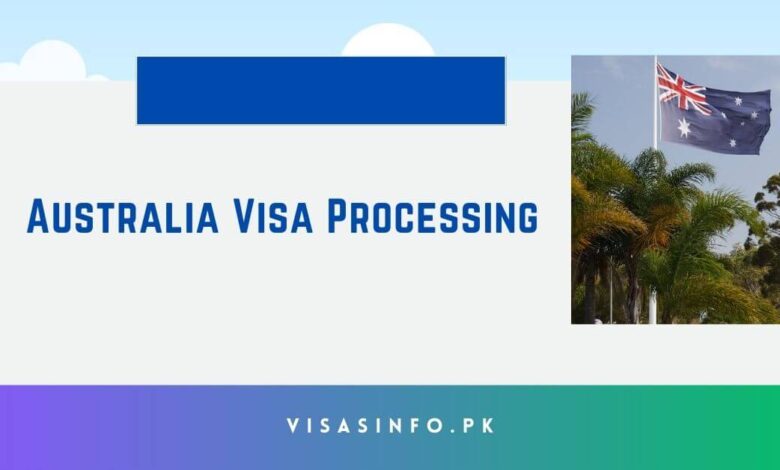Australia Visa Processing Update in 2024

A new Australian Ministerial Direction regarding the processing of skilled migrant visas was recently implemented. Ministerial Direction Number 105, which prioritizes experienced visa applicants, serves as evidence of the Australian government’s advocacy for regional Australia. This guidance is a supplement to the ongoing endeavors to expedite the processing of Australian skilled visas.
The Australian government has allocated $48.1 million to ensure that the Visa program’s administration is continuously improved to strengthen its dedication to providing exceptional Immigration Services.
What is Ministerial Direction Number 105?
The Australian government has issued Ministerial Direction 105, a set of guidelines that prioritize certain professional visa applicants over others. This implies that if your application is classified as a priority area, you may anticipate a more expedited processing time and a simpler route to attaining your Australian goal.
The objective of Ministerial Direction Number 105 is to attract skilled laborers to industries that are essential to Australia’s economic expansion, including engineering, healthcare, and information technology. If your field of employment is one of these priority areas, you may experience quicker processing times as your application may be reviewed before those of others.
By reducing the amount of paperwork and simplifying the process, the Australian government may expedite the application process for you. Furthermore, your application may have a higher probability of being approved.
Key Points of Ministerial Direction Number 105
1. This new Visa policy’s main points are as follows:
Acknowledgment of the necessity to streamline the visa application process
The Australian government has recognized the significance of simplifying the visa application process for regional Australian businesses that employ skilled personnel. This policy prioritizes applications for employer-sponsored visas and employment opportunities in regional Australia. It consists of the Employer Nomination Scheme (Subclass 186), the Skilled Employer Sponsored Regional Provisional Visa (Subclass 494), and the Temporary Skill Shortage Visa (Subclass 482).
2. Prioritizing applications for specific occupations
Applications for visas associated with employment in the healthcare and education sectors will be prioritized, but the processing time for these occupations will not be significantly affected. The list of prioritized occupations within these sectors has remained unchanged.
3. Sponsors who possess accredited status are prioritized.
By the updated Certified Sponsorship Program of the Australian government, businesses that have secured venture capital will be granted financial preference to expedite procedures and establish pathways to permanent residents. This represents a change from the previous process, in which offshore applications for permanent visas were prioritized over onshore applications.
4. Removal of priority status of certain passport holders
To enhance overall efficiency, the priority status of certain eligible passport bearers was revoked. This applies to British nationals residing abroad and Hong Kong citizens. For a comprehensive list of all visa subclasses under each category that are subject to Ministerial Direction number 105, please refer to the skilled Visa processing priorities section of the Australia Home Affairs website.
New Points-Based System
A new points system has been implemented by Ministerial Directive Number 105 to prioritize qualified visa applications. This implies that, regardless of whether your profession is included in the golden list, you may still receive additional points for your English proficiency, work experience, and credentials. This new rule may facilitate the entry of competent professionals in high-demand disciplines into Australia more expeditiously and effortlessly. While your field of employment may not be prioritized, the points-based system provides an alternative route to success.
Check Also: Australia Visa Processing Time Update
Challenges and Restrictions
Ministerial Direction 105 may arouse apprehensions among certain individuals regarding its impartiality and transparency, despite its advantages. Critics contend that it could result in a skills scarcity in other industries and disadvantage capable individuals in non-priority occupations.
Benefits of Australia Visa Processing
- Faster Processing Times: Updates frequently seek to expedite the processing of visa applications, enabling applicants to anticipate their next steps with greater certainty and receive decisions more promptly.
- Enhanced Efficiency: The administrative burden on both applicants and immigration officials can be reduced by the implementation of updated systems and streamlined procedures, which can result in more efficient processing.
- enhanced User Experience: The application process can be made more user-friendly by utilizing modernized online platforms and enhanced communication channels, which can provide applicants with clearer guidance and support.
- Enhanced Transparency: Updates may include improved monitoring and communication tools, which will enable applicants to more easily monitor the status of their applications and receive timely updates.
- Improved Resource Allocation: The immigration system can more effectively allocate resources by optimizing processing workflows and utilizing technology, thereby reducing backlogs and concentrating on high-priority applications.
- Improved Security Measures: To safeguard the integrity of the immigration system and prevent fraud, updates frequently integrate sophisticated security features.
- More Consistent and Accurate Decision-Making: The probability of errors is reduced, and fair outcomes are guaranteed by enhanced data management and systems.
- Enhanced Flexibility: Updates may introduce more flexible processing options, such as tailored solutions for various types of visas or expedited services for urgent cases.
- Support for Strategic Priorities: Supporting Australia’s economic and social objectives, the processing of updates can be by broader strategic objectives, such as addressing labor shortages or encouraging regional migration.
- Improved Integration with Other Services: Enhanced processing systems may be more effectively incorporated with other government services, resulting in a more cohesive experience for applicants who must interact with multiple departments..
Frequently Asked Questions:
-
What is the new visa update for Australia?
The fee for international students will increase as of 1 July 2024.
As of 1 July 2024, the fee for international student visas will increase from $710 to $1,600. This change reflects the growing value of education in Australia, as well as the Albanese Government’s commitment to restoring integrity in the international education sector. -
Is there a delay in Australian visas?
The number of people stuck on Bridging Visas has increased sixfold. Visa wait times have dramatically increased. The processing time for the subclass 887 visa has more than doubled and is currently at 24 months. Permanent visas have become less important compared to temporary and employer-sponsored visas.
-
Is Australia issuing visas?
You can apply for a range of Australian visa types, including tourist visas and working holiday visas, via the ETA app or on the Department of Home Affairs website.



